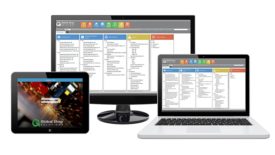Home » Keywords: » cost of quality
Items Tagged with 'cost of quality'
ARTICLES
Management | Value of Quality 2-part Series
When a company makes quality a primary goal the benefits outweigh the risks.
Read More
Software & Analysis
A Dollar Today Is Worth More Than a Dollar Tomorrow:
How assuming digital maturity is key to quality, competitive advantage, and intelligent technology.
February 6, 2023
Quality 101
Know Your True Cost of Quality with Integrated ERP
In the end, the true cost of quality comes down to the cost of making the part plus the cost of bad parts.
July 15, 2022
Management
Just Starting the Automation Game? Three Steps to Make the Jump Easier and More Cost-Effective
If you're still considering taking the first—or possibly next—step in your automation journey, start with the following steps to facilitate the process and feel more comfortable doing it.
August 15, 2021
Cost of Quality
How a cost of quality approach, already customized for software and information technology, can be applied toward the deployment and implementation of Quality 4.0 in an organization.
September 1, 2020
Understanding How Management Involvement Impacts the Risk of Quality Cost
Here’s a hidden gem in the pursuit of quality.
November 8, 2019
What Is the Cost of Quality in Manufacturing?
Having a low-quality product can be more expensive.
October 8, 2019
What Chief Quality Officers Should be Concerned About in 2019
Quality opportunities are everywhere.
April 8, 2019
Reengineering Capital Project “Rework”
The goal of limiting rework to 2% is within reach
June 15, 2018
Stay in the know with Quality’s comprehensive coverage of
the manufacturing and metrology industries.
eNewsletter | Website | eMagazine
JOIN TODAY!Copyright ©2024. All Rights Reserved BNP Media.
Design, CMS, Hosting & Web Development :: ePublishing













